Self-tapping screws for corrugated board: selection and fastening
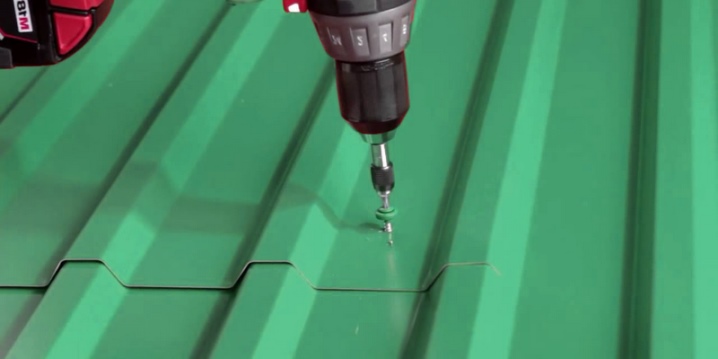
Today, metal profiled sheets are very popular and are considered one of the most versatile, durable and budget building materials. With the help of metal corrugated board, you can build a fence, cover the roof of utility or residential buildings, make a covered area, and so on. This material has a decorative coating in the form of painting with polymer paint, and cheaper options can be coated only with a layer of zinc, which is designed to protect the material from corrosion. But no matter how strong and beautiful the corrugated board is, its successful application largely depends on what hardware you use when performing installation work.

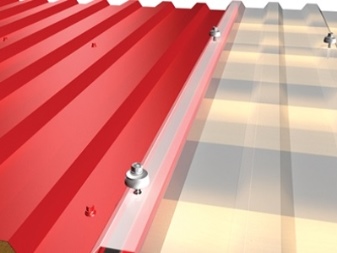
Description
The self-tapping screws used for fixing the corrugated board are self-tapping screw... That is, it is a body with a working head, which has a triangular self-tapping thread along its entire length. To gain a foothold in the material, the self-tapping screw has a pointed tip in the form of a miniature drill. The head of this hardware can have a different configuration - it is selected for installation depending on the type of fastening of the profiled sheet and the options for creating the aesthetic appearance of the finished structure.

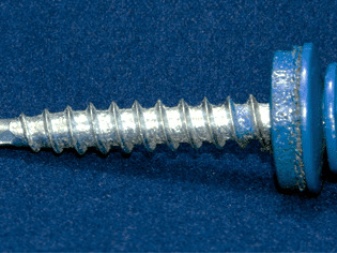
Working with self-tapping screws for corrugated board has the same principle as when using screws - with the help of a thread, the hardware enters the thickness of the material and reliably strengthens the abutment of the corrugated sheet in the right place.
Unlike screws, for the use of which you need to pre-drill the material, the self-tapping screw performs this task itself, at the time of screwing it in. This type of hardware is made from extra strong carbon steel alloys or brass.
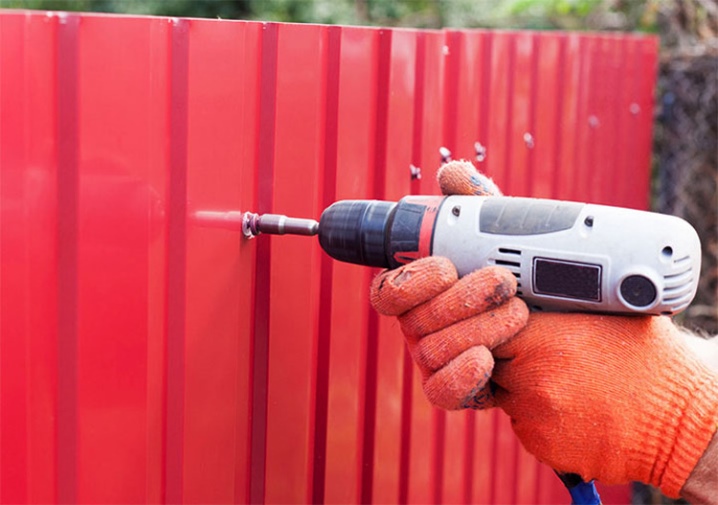
Self-tapping screws for corrugated board have their own characteristics.
- The head has the form of a hexagon - this form has proved to be the most convenient in the process of performing installation work, and in addition, this form reduces the risk of spoiling the polymer decorative coating of the hardware. In addition to the hexagon, there are heads of another type: semicircular or countersunk, equipped with a slot.
- The presence of a wide round washer - this addition allows you to reduce the likelihood of rupture of thin-sheet material or deformation during installation. The washer extends the life of the self-tapping screw, protecting it from corrosion and evenly distributing the load at the attachment point.
- Round shape neoprene pad - this part not only fulfills the insulating properties of the fastener, but also enhances the effect of the washer. The neoprene gasket also acts as a shock absorber when the metal expands during temperature changes.
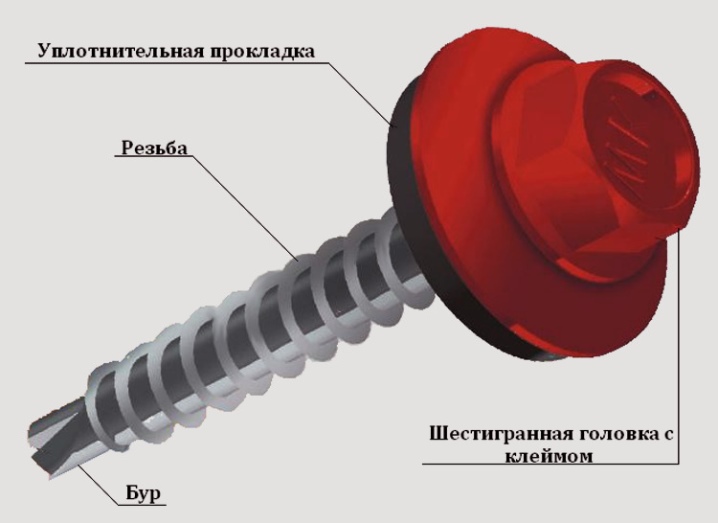
Self-tapping screws for profiled sheets are covered with a protective zinc layer, but in addition, for decorative purposes, they can be coated with polymer paint.
The self-tapping screws cover color corresponds to the standard sheet colors. Such a coating will not spoil the appearance of the roof or fence.
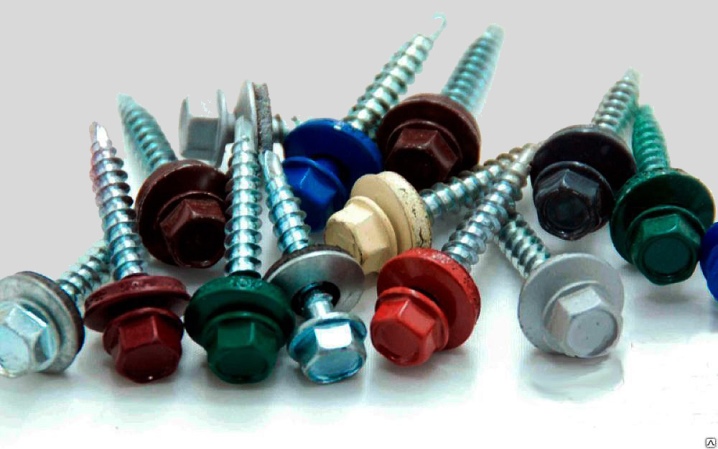
Varieties
Self-tapping screws for fastening profiled decking to supporting structures are divided into types, depending on the fastening material.
- Self-tapping screws for wood - the hardware has a sharp tip in the form of a drill and a thread with a large pitch on the rod body. These products are intended for work in which the metal profiled sheet must be fixed to a wooden frame. Such hardware can fix the sheet, the thickness of which is 1.2 mm, without preliminary drilling.

- Self-tapping screws for metal profiles - the product has a tip that looks like a drill for metal. Such hardware is used when you need to fix a sheet up to 2 mm thick to a structure made of metal. Drills for metal profiles have frequent threads on the body, that is, with a small pitch.
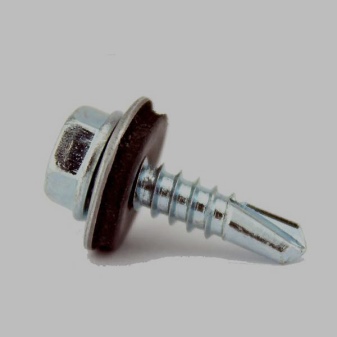
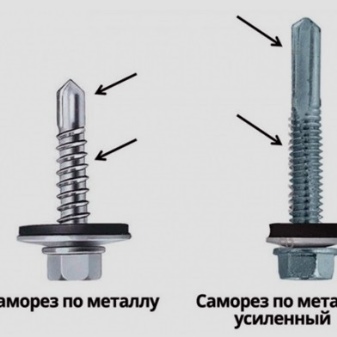
The roofing screw can also be produced with an enlarged drill, and you can also purchase options with or without a press washer.
There are also anti-vandal options for hardware, which outwardly are very similar to ordinary self-tapping screws for corrugated board, but on their head there are recesses in the form of stars or paired slots.
This design does not allow these hardware to be unscrewed with ordinary tools.

Dimensions and weight
According to GOST standards, self-tapping hardware for profiled sheet, used for fastening to a metal frame, are made of carbon steel alloy grade C1022, to which a ligature is added to strengthen the finished products. The finished self-tapping screw is treated with a thin zinc coating, the thickness of which is 12.5 microns, in order to protect against corrosion.
The sizes of such hardware are in the range from 13 to 150 mm. The product diameter can be 4.2-6.3mm. As a rule, the roofing type of self-tapping screw has a diameter of 4.8 mm. Having such parameters, hardware without preliminary drilling can work with metal, the thickness of which does not exceed 2.5 mm.
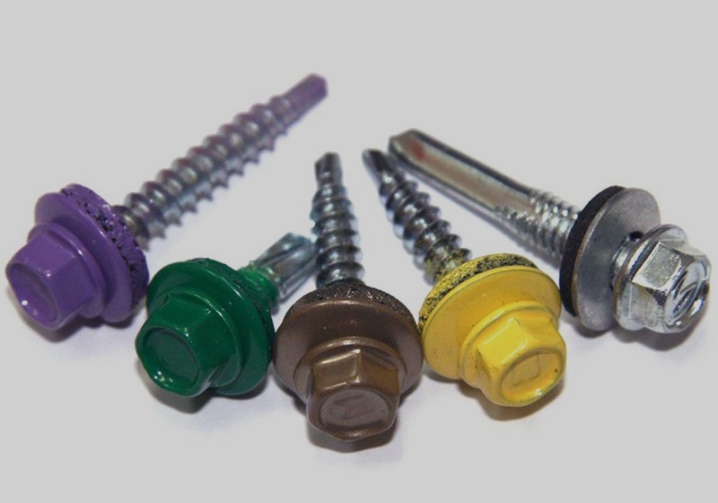
The difference between self-tapping screws for corrugated board, intended for wooden frames, is only in the thread. Outwardly, they are very similar to ordinary screws, but unlike them, they have a larger head. Hardware is made of carbon steel and is able to drill a sheet of corrugated board with a thickness of up to 1.2 mm.
On sale you can also see non-standard sizes of self-tapping screws for corrugated board. Their length can be from 19 to 250 mm, and their diameter is from 4.8 to 6.3 mm. As for the weight, it depends on the model of the screw. On average, 100 pieces of these products can weigh from 4.5 to 50 kg.
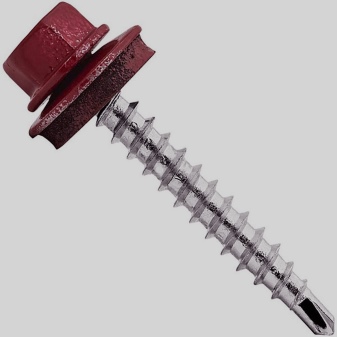
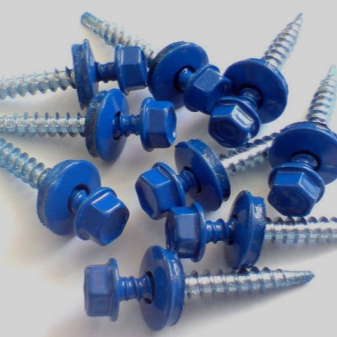
How to choose
In order for the metal sheet to be securely fixed, it is important to choose the right hardware materials. The selection criteria are as follows:
- self-tapping screws should be made only of alloyed carbon steel alloys;
- the indicator of the hardness of the hardware should be higher than that of the sheet of corrugated board;
- the head of the self-tapping screw must have the manufacturer's mark;
- products are packed in original packaging, which should display the manufacturer's data, as well as the series and date of issue;
- the neoprene gasket must be attached to the spring washer with glue, replacing neoprene with rubber is not allowed;
- to check the quality of the neoprene gasket, you can squeeze it with pliers - with this action, no cracks should appear on it, the paint does not exfoliate, and the material itself quickly returns to its original appearance.

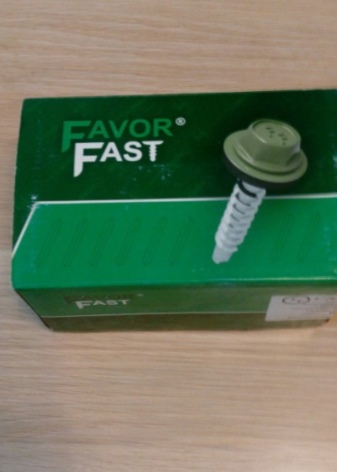
Experienced installers recommend purchasing self-tapping screws from the same manufacturer that produces metal profiled sheets. Trade organizations are interested in quality and complex deliveries, so the risk of buying a low-quality product in this case is minimal.

How to calculate
Self-tapping screws for the profiled sheet, if they are made according to GOST standards, have a rather high cost, so it is necessary to correctly determine the amount of hardware that will be required to complete the work. In addition, it is necessary to determine the parameters of the hardware, based on what materials you will have to work with.
When determining the length of the working part of the hardware, you need to remember that its length should be greater than the sum of the thickness of the profiled sheet and the base of the structure, at least by 3 mm. As for the diameter, the most common sizes are 4.8 and 5.5 mm.
Determination of the number of self-tapping screws depends on the type of construction and the number of fasteners.
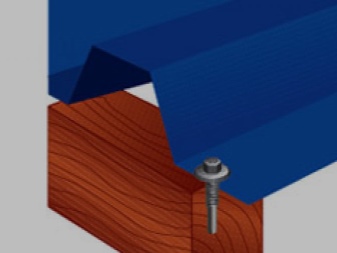
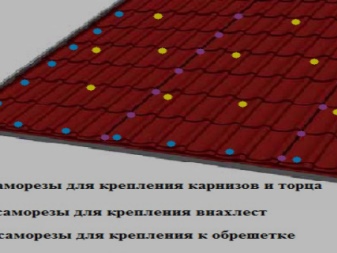
The calculation of hardware for a fence from a profiled sheet is as follows.
- On average, 12-15 self-tapping screws are used per square meter of corrugated board, their number depends on how many horizontal lags will be involved in the construction of the fence - on average, there are 6 self-tapping screws for each lag, plus 3 pieces must be kept in stock for unforeseen situations.
- When there is a joining of two sheets of corrugated board, the self-tapping screw has to punch 2 sheets at once, overlapped to each other - in this case, the consumption increases - 8-12 self-tapping screws go to the corrugated sheet.
- You can calculate the required number of sheets of corrugated board like this - the length of the fence must be divided by the width of the profiled sheet, excluding the overlap.
- The number of horizontal lags is calculated based on the height of the fence planned to be made, while the lower log should be located approximately at a distance of 30-35 cm from the surface of the earth, and the second support log is carried out already stepping back 10-15 cm from the upper edge of the fence. In the event that a distance of at least 1.5 m is obtained between the lower and upper lags, then for the strength of the structure it will also be necessary to make an average lag.
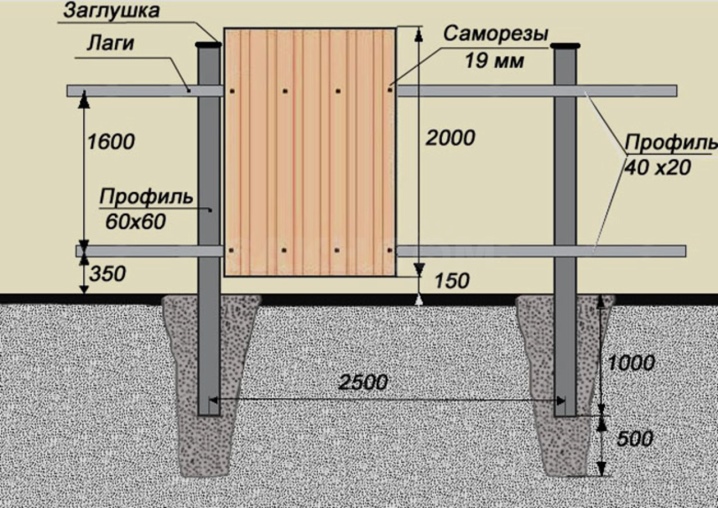
The consumption of hardware for the roof is determined based on the following data:
- to work you need to purchase short self-tapping screws for the lathing and long ones for attaching various elements of accessories;
- hardware for fastening to the crate take 9-10 pcs. for 1 sq. m, and to calculate the pitch of the lathing take 0.5 m;
- number of screws with a longer length is considered by dividing the extension length by 0.3 and rounding the result upwards.
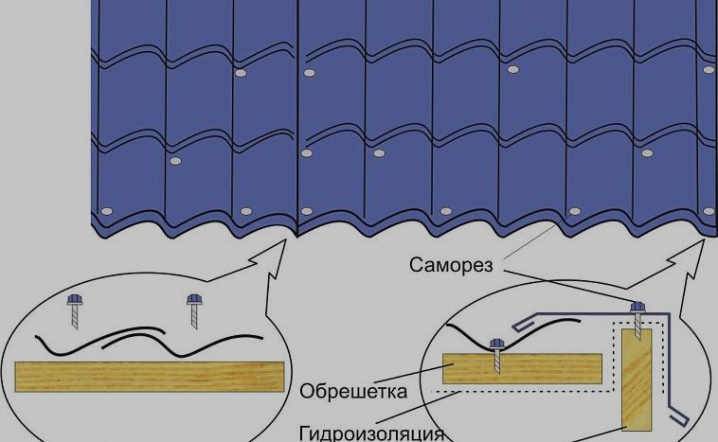
It is not recommended to purchase self-tapping screws in a strictly limited quantity, according to the calculations performed. You always need to have a small supply of them, for example, to strengthen the side mounts when installing a profiled sheet or in case of loss or damage of a small number of hardware.
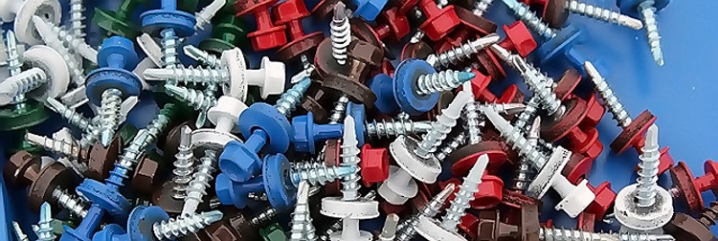
How to fix
Reliable fixing of the corrugated board implies the preliminary production of a frame structure from a metal profile or wooden beams. In order to tighten the screws in the necessary docking points correctly, on the roof or on the fence, you need to have a wiring diagram according to which the whole complex of work is performed. The installation process is not just about twisting the screws - it is necessary to complete the preparatory, and then the main stages of work.
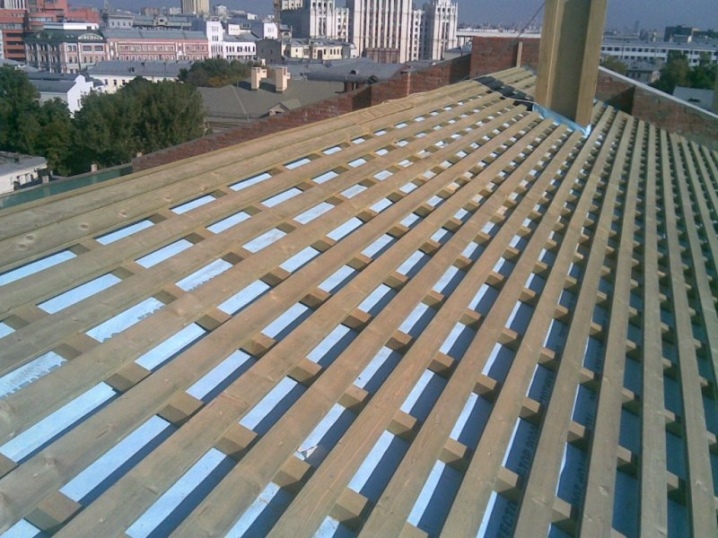
Preparation
For quality work you will need to choose the right diameter and length of the self-tapping screw... There is a single rule here - the heavier the metal profiled sheet weighs, the thicker the diameter of the fastening hardware must be chosen to ensure the reliability of the fastener. The length of the fastener is determined based on the wave height of the corrugated board. The self-tapping screw length should exceed the wave height by 3 mm, especially if 2 waves overlap.

Even despite the fact that manufacturers declare that their self-tapping screws can themselves pass through a sheet of corrugated board, if you have to work with a metal sheet of 4 or 5 mm, then before fixing this sheet you need to mark the places of its fastenings and drill holes in advance for the entry of the screws.
The diameter of such holes is taken 0.5 mm more than the thickness of the self-tapping screw. Such preliminary preparation will allow avoiding deformation of the sheet in the place of fixing it with a self-tapping screw, and will also make it possible to more tightly fix the profiled sheet to the support frame. In addition to these reasons, a slightly larger hole diameter at the attachment point will make it possible for the profiled sheet to move during temperature changes.
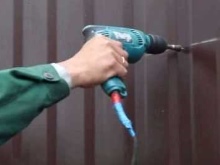
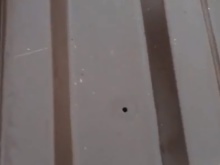
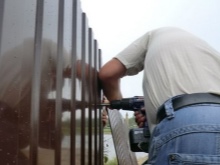
Process
The next stage in the installation work will be the process of fastening the corrugated board to the frame. The sequence of actions in this case is assumed as follows:
- for leveling the bottom edge of the profiled sheet pull the cord along the bottom of the fence or roof;
- installation begins from the bottommost sheet, in this case, the side of the direction of work can be any - right or left;
- sheets of the first block, if the coverage area is large, are installed with a slight overlap, first they are attached to 1 self-tapping screw in the overlap areas, after which the block is leveled;
- further self-tapping screws are introduced into each low part of the wave along the bottom of the sheet and after 1 wave - on the rest of the sheets of the vertical block;
- after the end of this stage a self-tapping screw is also placed on the remaining low sections of the waves;
- self-tapping screws are introduced only in the perpendicular direction relative to the plane of the frame;
- then go to mount the next block, placing it overlap with the previous one;
- the size of the overlap is made at least 20 cm, and if the length of the crate is not enough, then the sheets of the block are cut and connected together with hardware, introducing them in a row into each wave;
- overlap area for sealing can be treated with a moisture insulating sealant;
- the step between the attachment nodes is 30 cm, the same applies to addons.
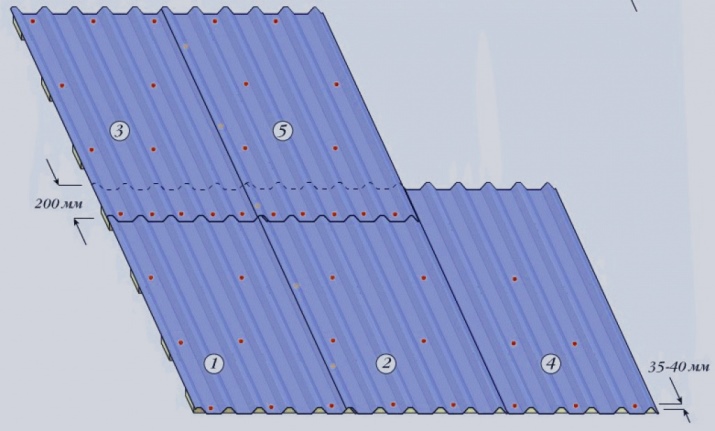
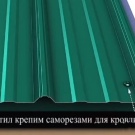

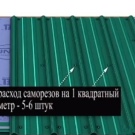
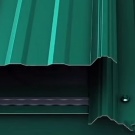
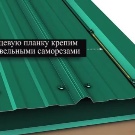
To protect against corrosion, the metal in the trimming area can be treated with a specially selected polymer paint.
If the corrugated board is used to cover the roof, then special roofing hardware is used for fastenings, and the step at the lathing is made minimal.
To fasten the ridge element, you will need to use self-tapping screws with a long working part.

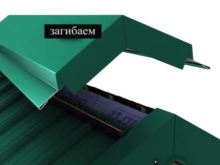
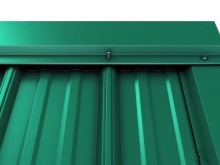
When installing a profiled sheet for a large area fence it is allowed to fasten the corrugated board elements end-to-end, without overlap... This approach will help reduce the structure's exposure to strong wind loads. In addition, it is necessary to mount profiled sheets in each wave and to each log, without gaps, and for installation it is recommended to use only hardware equipped with a sealing washer.

The choice of metal corrugated board is a budget option for a building material that can be quickly and easily installed. With proper installation work using high-quality self-tapping screws, such material can retain its operational properties for at least 25-30 years without repair and additional maintenance.
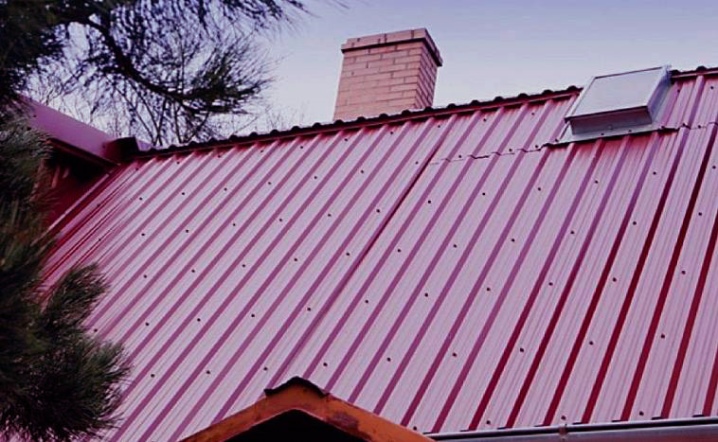
The video below tells about the design, application features and tricks of installing self-tapping screws for corrugated board.













The comment was sent successfully.